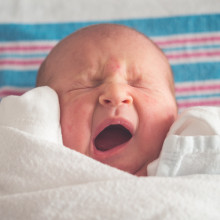Both the uterus and placenta are remarkable organs, but how do they work? Kirsty McIntyre and Emma Lofthouse fill us in...
In this episode

- Naked Body: The uterus and placenta
Naked Body: The uterus and placenta
Emma Lofthouse, Durham University, Kirsty McIntyre, University of Glasgow
Both the uterus and placenta are remarkable organs, but how do they work? Kirsty McIntyre and Emma Lofthouse fill us in...
The placenta is the crucial link between the mother and developing foetus. It’s an organ that performs all the functions that the unborn baby cannot do for itself, like getting oxygen, and nutrients. There’s nothing for the unborn baby to eat or breathe, after all.
The placenta begins to develop when the fertilised egg attaches to the wall of the mother’s womb, or uterus, and will ultimately connect to the foetus through the umbilical cord.
In the uterus, the growing foetus relies completely on the flow of oxygen and nutrients through the placenta from the mother’s circulation for growth and development.
At the beginning of pregnancy, the mother’s body undergoes a lot of changes. The lining of the uterus is full of small spiral arteries and to deal with the higher blood flow that the developing placenta will require, they become larger vessels.
After about 3 months of pregnancy, the placenta will have developed a complex network of blood vessels to ensure the delivery of essential nutrients to the foetus, without mixing foetal and maternal blood. This is important so that the developing baby goes undetected by the mother’s immune system. We can’t have the body thinking the baby is a virus.
The placenta continues to grow throughout pregnancy and will end up about the size of a dinner plate. In fact, the word placenta means ‘flat cake’, because of its shape. This is a fitting, if not particularly appetising, name.
The umbilical cord is the connection between the placenta and the foetus. The umbilical cord contains two arteries and one vein, which are surrounded by a jelly-like substance called Wharton’s jelly.
Just like in our intestines, the placenta has tiny finger-like bumps about a millimetre long called villi. They’re there to increase the surface area available. That makes it easier to get nutrients and oxygen in the mother’s blood across to the growing foetus. Likewise, the placenta transfers waste products such as carbon dioxide from the foetus back to the parent.
The placenta also produces hormones that work on the mother, so as to adapt her better to the pregnancy. However, these hormonal changes can sometimes have unwanted side-effects, such as morning sickness.
Problems with the placenta can lead to diseases such as foetal growth restriction, when the baby grows more slowly than usual, and pre-eclampsia, signs of which may include high blood pressure and protein in the mother’s urine. Both of these conditions represent problems with the pregnancy which require medical attention. Some factors that can affect the placenta and foetus include: alcohol, drugs, smoking, all of which can cross the placenta and have harmful effects to the foetus’ development.
The uterus is a muscular organ, typically measuring just 7cm long by 5cm wide before a woman becomes pregnant. During pregnancy the uterus must expand to accommodate the growing foetus (and placenta!), rather like blowing up a balloon! At around twelve weeks, the uterus is just about the size of a grapefruit but by the end of pregnancy, the uterus will be the size of a watermelon and the uterine muscles will begin to tighten, preparing the body for contractions that happen during delivery.
And then, all things going well, there’ll be a brand new human in the world, in part, thanks to the placenta and the uterus.
Related Content
- Previous Psychedelics In Medicine
- Next Reconciliation










Comments
Add a comment